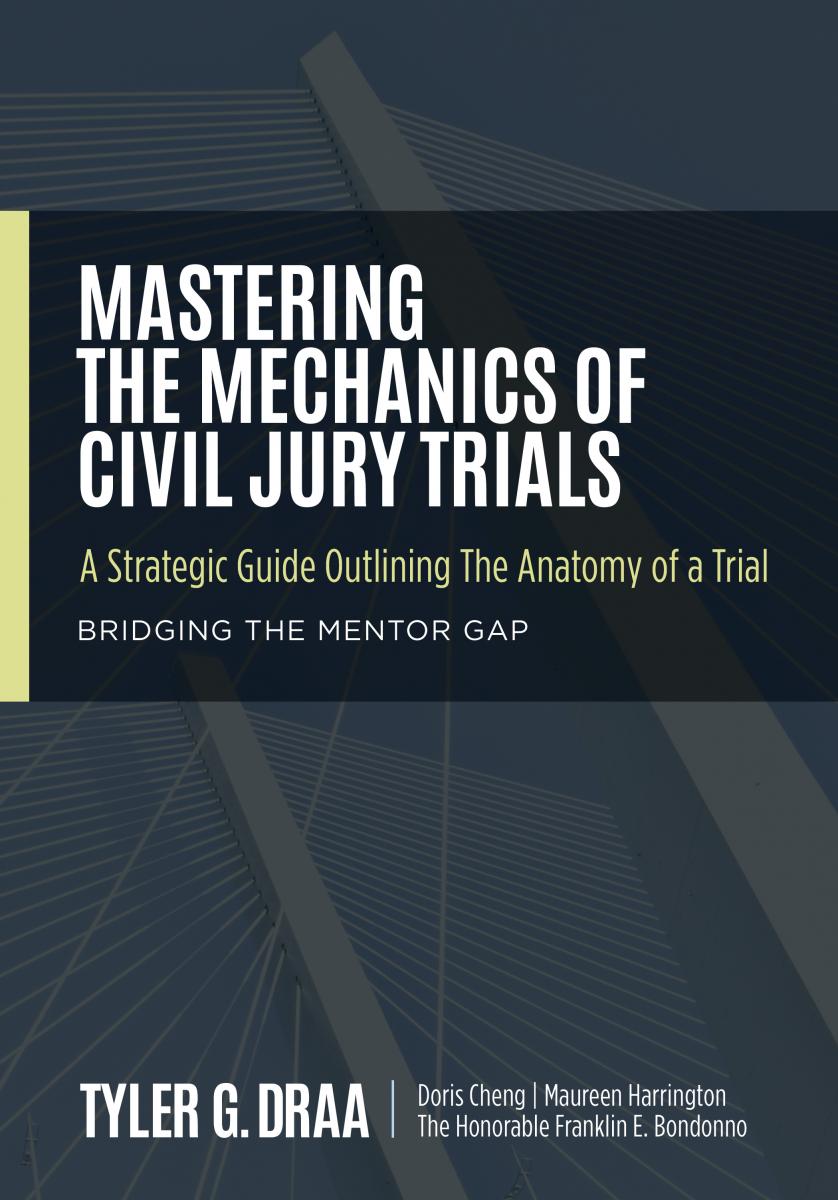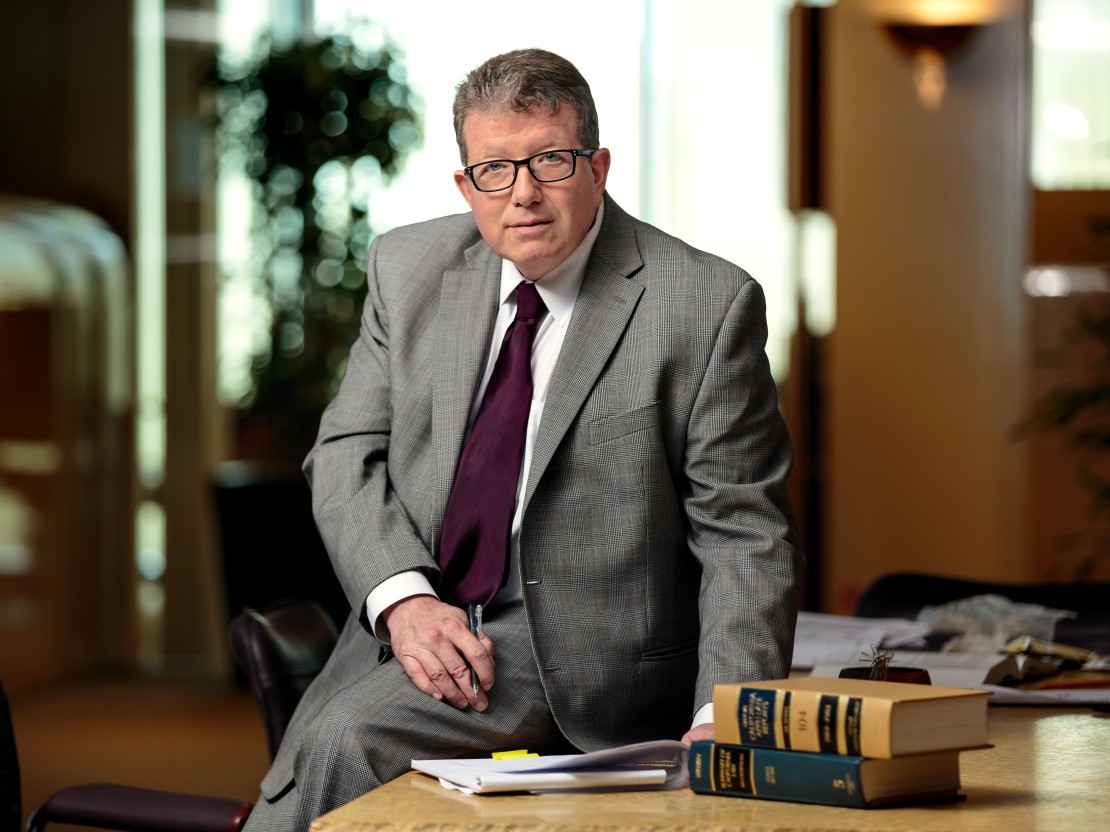
Tyler G. Draa ’78, had one simple purpose in mind when writing Mastering the Mechanics of Civil Jury Trials: A Strategic Guide Outlining the Anatomy of a Trial – it was to “pay it forward.”
The book, published this year by Balcony 7 Media and Publishing, is a fitting capper to a 30-plus year career as a civil trial lawyer, most recently as a partner with the firm, Greenfield Draa & Harrington LLP in Santa Clara County, CA.
Despite its rather unwieldy title (there’s even a second subheading: “Bridging the Mentor Gap”), the book has created quite a stir in the legal community and is being used by many as a “how-to” guide – and surrogate mentor – for young lawyers inexperienced in preparing and participating in jury trials.
“Trial lawyers primarily learn their craft through apprenticeships and opportunities to try cases,” Draa says. “The gifted mentor knows when to push the apprentice off the pier, when to jump in, and when to let the aspiring lawyer swim back to shore on his or her own.”
The idea for the book came about from another CMC graduate, Draa’s own son Justin ’04. In 2009, Justin was asked by the law firm that employed him to defend a jury trial. The principals of Justin’s firm were friends and colleagues of his father and were familiar with his jury trial record—primarily in civil litigation defense.
“They invited me to lay out the mechanics of trying the case and to otherwise help Justin and a second lawyer prepare for trial,” Draa says. “I jumped at the opportunity, sketching out a three-day lecture/presentation. Time flew by as I didactically described the process. I filled in the procedural and strategic gaps that none of us are taught in law school.”
Word soon spread about Draa’s preparations, and he presented his “course” as a courtesy to other lawyers.
“I discreetly gave the course to some newly-appointed Jurists,” he says. “I assembled a panel comprised of plaintiff lawyers, a commercial law specialist and active judges to give annual presentations to the Santa Clara County Bar Association members. (We consistently attract a full capacity crowd.) The syllabus began to look like a book and several publishers expressed interest.”
Fewer chances to try cases today
According to Draa, a young lawyer’s first few trials are, at best, daunting; at worst, terrifying. Mentors help young trial lawyers ease into a comfort level learning procedural minutiae, courtroom etiquette, how to “read” the room, and how to think on their feet—all while encouraging them to remain true to their personalities.
Practically speaking, in Draa’s view, young lawyers learn how to try a case after they graduate from law school. It takes from five to 10 trials to become proficient and comfortable with the process.
And therein lays the problem.
“Very few cases now go to trial by jury,” Draa says.
When Draa was starting out in the heart of the Silicon Valley, he says that hundreds of cases proceeded to jury verdicts each year. Today, the situation is dramatically different. Santa Clara County, for instance, has almost two million residents, yet Draa says that, two years ago, only 50 civil trials proceeded to verdicts in the Santa Clara County Superior Court.
“Last year,” he adds, “that number contracted to 24 verdicts. Our court only hosted two verdicts during the first quarter of this year. The plummeting number of verdicts is emblematic of experiences in jurisdictions throughout the United States. With no trials, there are no opportunities to try cases. Mentors are aging and retiring. The apprentice system is disappearing. It’s all about the atrophy of opportunity.”
Step by step
In Mastering the Mechanics of Civil Jury Trials, Draa and three contributors (Doris Cheng, Maureen Harrington and the Hon. Franklin E. Bondonno) break down the trial process into a series of achievable tasks.
“We have tried to substitute the mentor’s whispered counsel with text,” he says. “We cover competing schools of thought; presenting cases for the plaintiff can require approaches far different than those applicable to defendants. (Although, I am always struck by the vast majority of topics on which we all agree.)”
As to the question of what is the most important aspect of the book for young, untried trial attorneys, Draa outlines four major points:
• Trials need not be daunting. Always break down the process until you have a task you can handle.
• Know that trials are never tidy. At best, one can plan and prepare for about 70 percent of what transpires. When such setbacks as an opponent’s surprise move, a judge’s order, or a witness’ poor performance require the lawyer to develop new strategies, he or she should rip out the corresponding section of the trial notebook, use it to line a bird cage, and get creative. Take measured chances. Every new development presents an opportunity; the trial lawyer has to remain flexible enough to recognize that opportunity.
• Opposing lawyers have a lot in common. Always strive to remain colleagues first, and adversaries second. “Most endorsements printed in the book were authored by colleagues against whom I tried cases,” Draa says. “I am very proud of that.”
• Paraphrasing Oscar Wilde: Always be yourself; everybody else is taken. Developing and retaining credibility with the Judge and Jurors is key to victory. Juries sense and mistrust disingenuous personae. They also abhor hubris.
Heretofore, ergo, whereas
… and other clogged language
“Effective writing may be a casualty of the digital age,” Draa says. “Students read and write less. They receive and process information through video sound bites. Effective legal writing suffers.”
Most lawyers, he says, clog their written information with legalese. Words such as heretofore, hereinafter, ergo, said, whereas, aforementioned – to name but a few – should be stricken from the young lawyer’s vocabulary.”
“The best editing technique is to have a lay person proof one’s briefs,” Draa suggests. “I encourage my wife, Linda, to read my important briefs. She is a ruthless editor; she catches a lot of my ‘legal speak.’ ”
At CMC Draa majored in Political Science and, by his own admission, was not a standout student.
“Through some sort of osmosis, I learned how to reason and write at CMC,” Draa says. “I was encouraged to read and emulate writing styles. Reading such authors as William James and Winston Churchill—and having professors help identify writing devices and style separating great writing from pedestrian communication—was invaluable.”
Among Draa’s own mentors at CMC, Emeritus Professor Ward Elliott stood out as brilliant, engaging and funny.
“He is also a stunningly precise writer,” Draa says. “He ruthlessly critiqued my term papers—which was enormously helpful. I sent Professor Elliot a copy of the book; it took four decades, but I think I have finally written something he likes.”
Draa tells the story that while he was transforming his lecture syllabus into this book, he had an ongoing image of a trial call in which he was just an observer.
“I imagined a young lawyer responding with ‘ready’ when the case was called,” he said. “And, on further observation, I imagined our book, selectively dog-eared; slightly sticking out of the lawyer’s trial bag. That would be the indicia of success.”
Now, cut to November 2015 when Draa gave the firm’s annual presentation to the County Bar Association.
“I was navigating through the court’s security line to be a judge pro tem for the day,” he recalls. “I recognized one of the course attendees who was through security. He spotted me, announcing he was responding to trial call. He had the book in hand, raised it for all present to see, and said he had just read it, cover to cover. With a smile on his face, he exclaimed, ‘I’m ready!’ ”
Now that’s a winning endorsement!
Johnson writes and blogs for various publications, including People Maga
